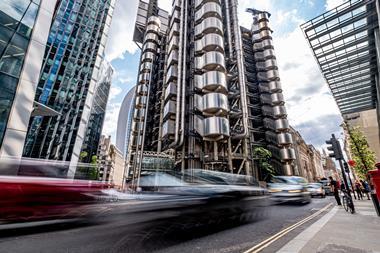The southern states of the US have been battered by four huge storms this year – and there’s still two months to go before the hurricane season is officially over. Lis Gibson of Deloitte, charts the costs so far and warns insurers to think about the implications of climate change.
The insurance market did not really believe this year’s grim hurricane forecasts after the benign past couple of years. But there have been four significant storms so far this year: tropical storm Fay and hurricanes Gustav, Hanna and Ike. With another two and half months to go, the season is shaping up to rival 2005. Is this natural variation or is the high number of storms a result of climate change?
Gustav and Ike threatened to cause severe damage and catastrophic losses to insurers. Ike made landfall in Texas on 13 September as a category 2 hurricane but with an unusually large wind field. Significant areas of the coastline were affected by storm surge with water levels about 9ft-12ft higher than normal. This was followed by significant flooding as Ike moved further inland.
The total insured loss is expected to be in the region of $8bn to $15bn (£4.3bn to £8.1bn), which does not include policies issued by the National Flood Insurance Program. But the cost was less than feared as neither the winds nor the storm surge were as bad as had been expected. The losses from offshore oil platforms, however, may be slightly higher than anticipated.
Last month, hurricane Gustav threatened severe damage to Louisiana, a state still recovering from the effects of Katrina in 2005, with two million residents ordered to evacuate. However the storm was not as severe as originally feared, reducing in strength as it approached land. Estimates for the insurance cost were reduced to $2bn to $7bn.
To put these estimates of losses from Gustav and Ike into perspective, hurricane Katrina cost the insurance industry about $45bn. Five of the top six most costly hurricanes all happened in 2005-2006 (the sixth, Andrew, hit Florida in 1992). But the industry had a narrow escape from hurricanes Dean and Felix in 2007; the two category 5 storms made landfall, but neither hit widely-populated areas.
Hurricanes are notoriously difficult to estimate for insurers and reinsurers as there are so many factors to take into account, including its path and strength. Even the experts at the National Hurricane Center in Miami had trouble projecting the path of tropical storm Fay last month when it made landfall on Florida several times. Although Fay never made it to hurricane status, it was the first storm in recorded history to hit the state four times when it took a route that was considered no more than a remote possibility. Without strong winds, it moved slowly through Florida and the subsequent heavy rain led to extensive flooding in Florida, Alabama, Georgia and Mississippi.
“Catastrophe models need to allow for the possibility of more frequent and more severe hurricane.
Lis Gibson, Deloitte
What is causing this increase in activity in recent years? There is well established research from Professor Kerry Emmanuel from the Massachusetts Institute of Technology which shows a correlation between sea surface temperature and the strength of hurricanes.
The frequency of hurricanes also is influenced by El Nino/La Nina and the Atlantic multidecadal oscillation, a cyclic variation in the large-scale atmospheric flow and ocean currents in the North Atlantic that combine to alternately increase and decrease Atlantic sea surface temperatures. The cause of the oscillation is not well understood, but the cycle appears to come round about every 60 to 70 years.
The biggest factor on costs for the insurance industry is where hurricanes make landfall, but researchers and catastrophe modellers as yet cannot determine if climate change will have an influence on this. Obviously, the effect on London market insurers and reinsurers will be especially severe if more hurricanes start hitting the more populous – and more heavily insured – US.
Insurers and reinsurers now need to think about how to address the implications of climate change on their book of business as well as implementing better processes for estimating their losses when the big one does hit. Catastrophe models need to allow for the possibility of more frequent and more severe hurricanes so that insurers fully understand their exposures and ensure that they are adequately allowed for within their premium rates and capital levels.
With the current credit crisis, it will be interesting to see how insurers are affected by the numerous storms and hurricanes, in particular if there is another significant storm this season. The US Federal Reserve has already had to step in to help AIG after investors were worried about insufficient capital levels, even though its problems were not due to hurricanes. In the event of a major hurricane, capital levels could be stretched to the limit for many insurers.
Lis Gibson is insurance partner at Deloitte.




































